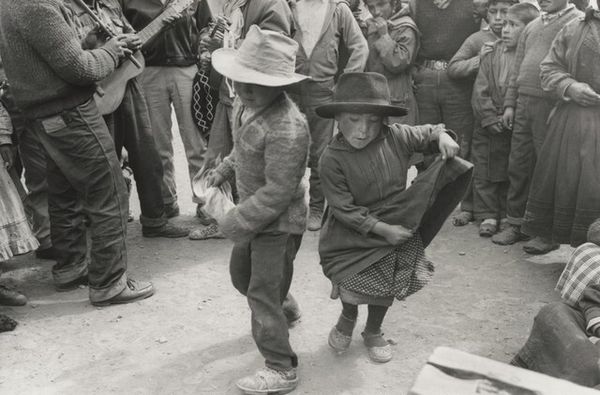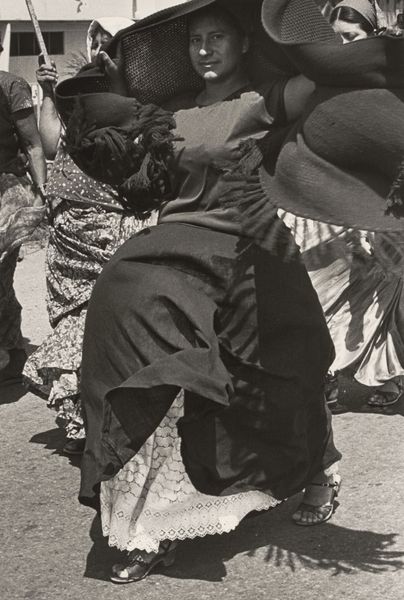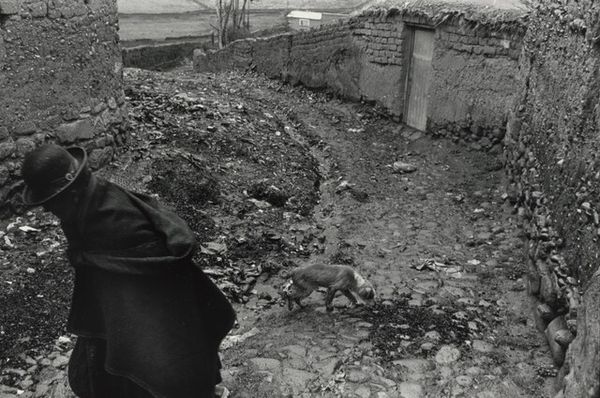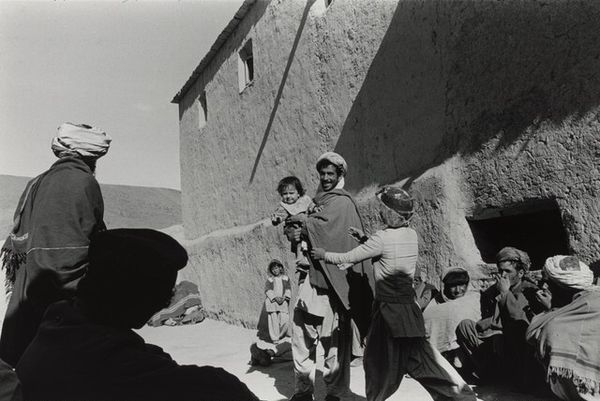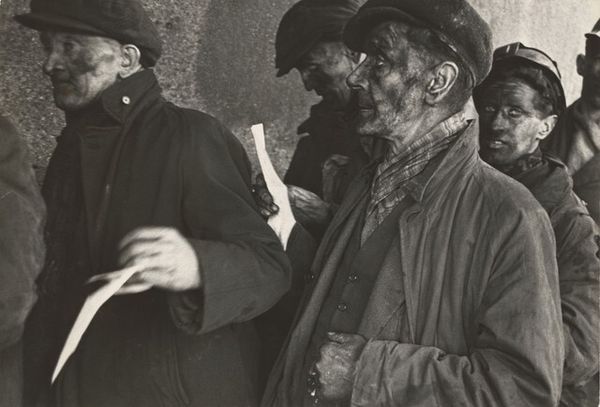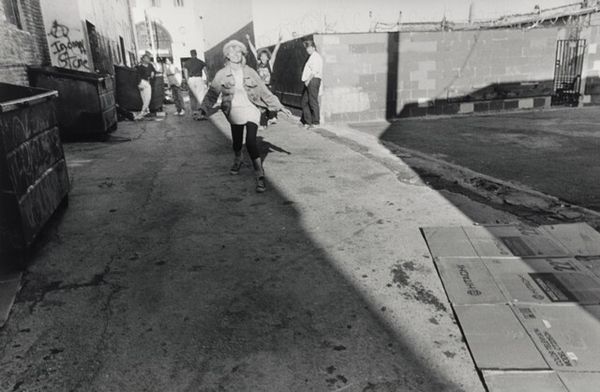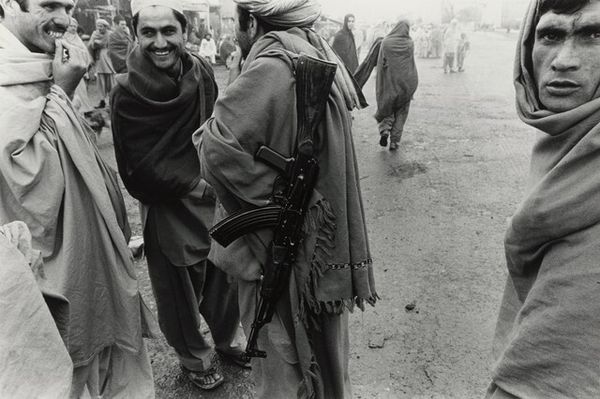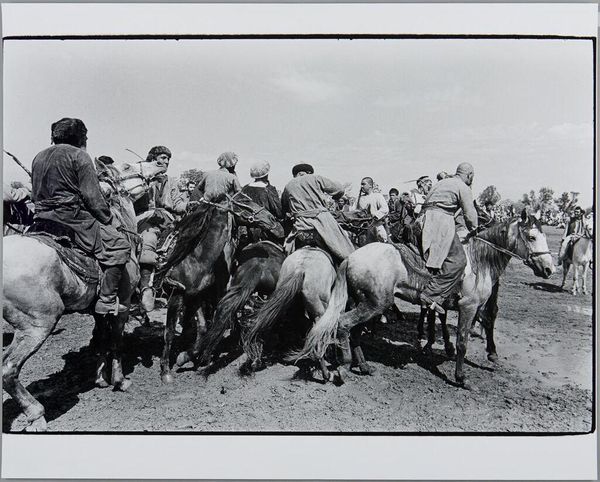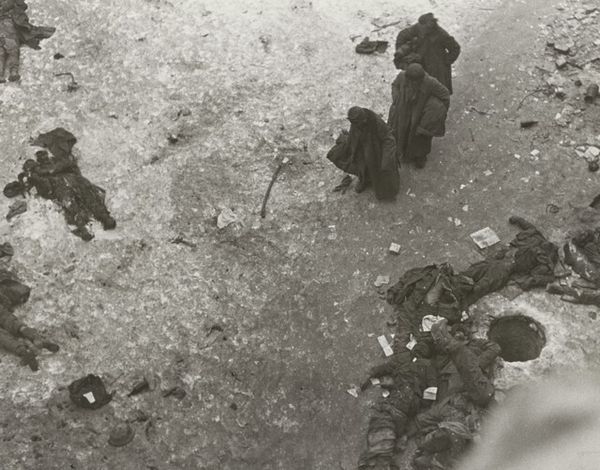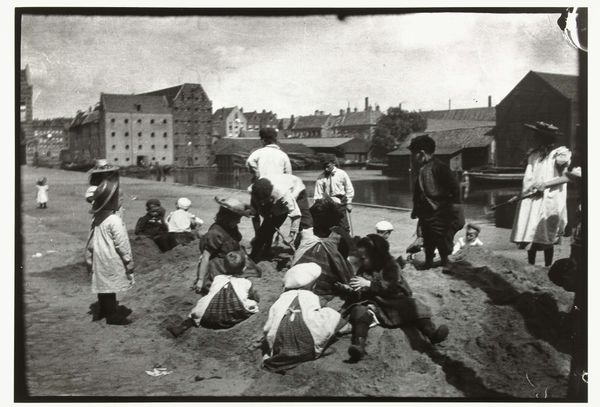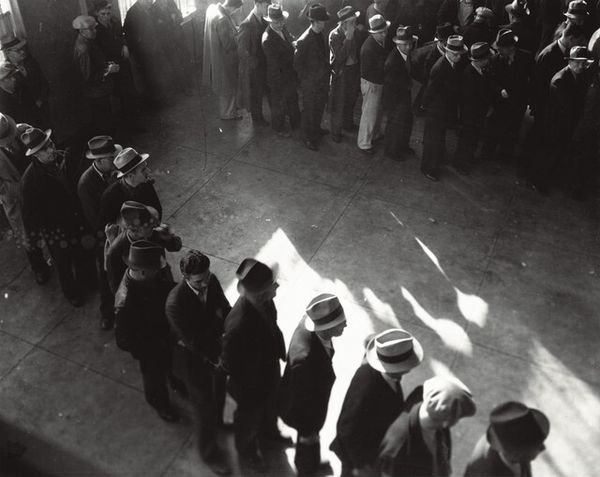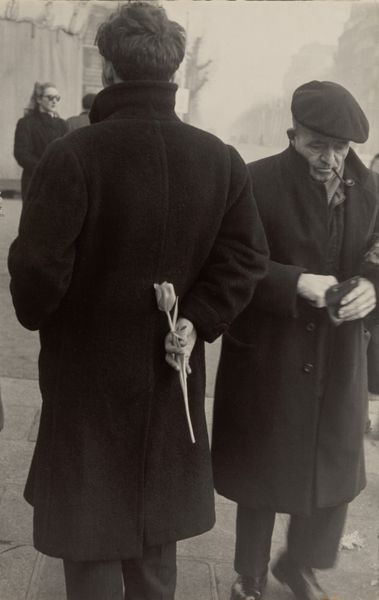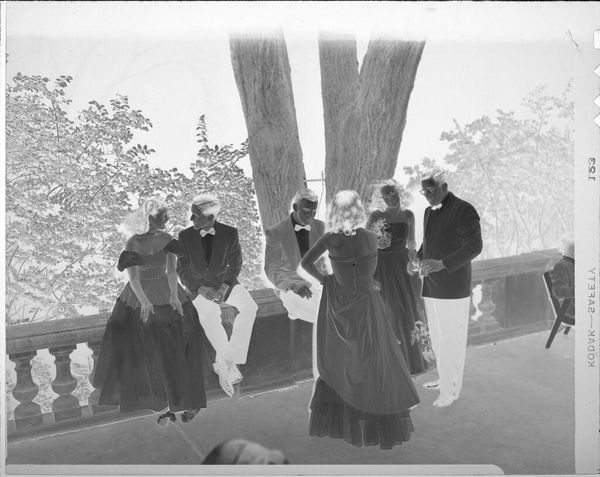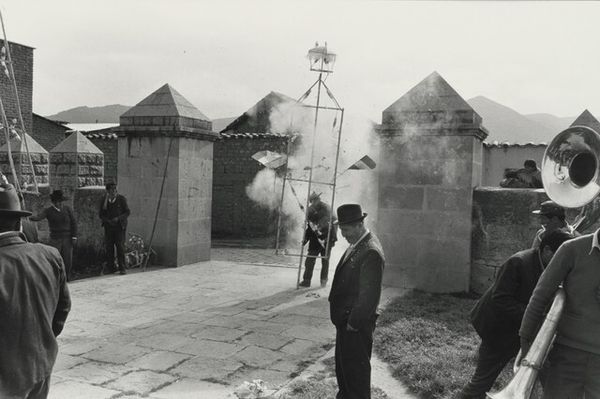
photography, gelatin-silver-print
#
black and white photography
#
street-photography
#
photography
#
black and white
#
gelatin-silver-print
#
monochrome photography
#
monochrome
#
realism
#
monochrome
Dimensions: image: 19 × 28 cm (7 1/2 × 11 in.) sheet: 24.5 × 35 cm (9 5/8 × 13 3/4 in.)
Copyright: National Gallery of Art: CC0 1.0
Curator: This is Ed Grazda’s "Copacabana, Bolivia," a gelatin silver print taken in 1975. My initial reaction is one of starkness—the high contrast and expansive foreground create a sense of distance, a sort of detached observation. Editor: That's interesting because, for me, it’s the dance that draws the eye, defying that starkness. The whirl of fabric and bodies is in the center of what is, admittedly, quite a tableau of observations of small community gatherings. It makes me wonder about communal expressions and resistance. What were the local politics like then, I wonder? Curator: I feel it, but there's a haunting quality. That wide-open space dwarfs the figures, making them seem isolated even within their groups. It speaks to the indigenous experience within these vast landscapes, how history bears down on intimate rituals, doesn’t it? Editor: Precisely! Consider the Aymara people, the original inhabitants around Lake Titicaca and Copacabana. This photo seems to freeze a moment of their enduring culture amidst social change, the people holding fast to tradition while adapting. The landscape itself has long born witness to political change in the Andes. Curator: The grouping of the men in the foreground, almost like spectators, creates this feeling. Then, the dancing women with their billowing skirts add a counterpoint—a sense of celebration or protest maybe? Editor: Possibly both, right? I imagine these visual narratives being powerful acts of defiance. These weren’t simply folk dances, these were expressions of community power, perhaps resilience against imposed norms. Think of the ways indigenous identity was—and is—politicized. Curator: It's a compelling image. Grazda manages to capture both the fragility and the strength of human connection against an immense backdrop, giving agency to the dance itself. Editor: I agree, this image resonates across time because these kinds of tensions around community, tradition, and political change continue to play out around the world. "Copacabana, Bolivia," therefore acts as a visual reminder of enduring human complexity.
Comments
No comments
Be the first to comment and join the conversation on the ultimate creative platform.
